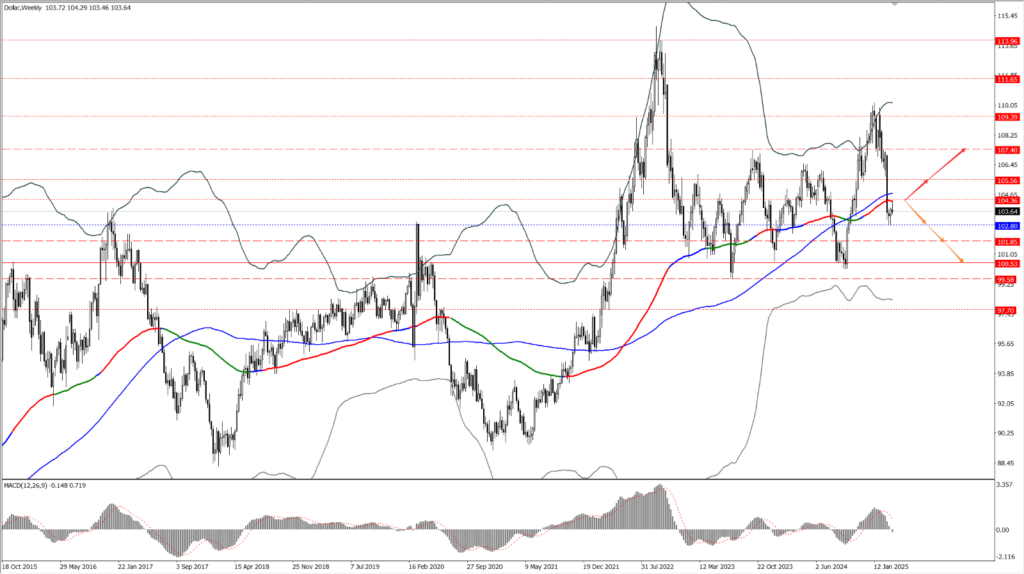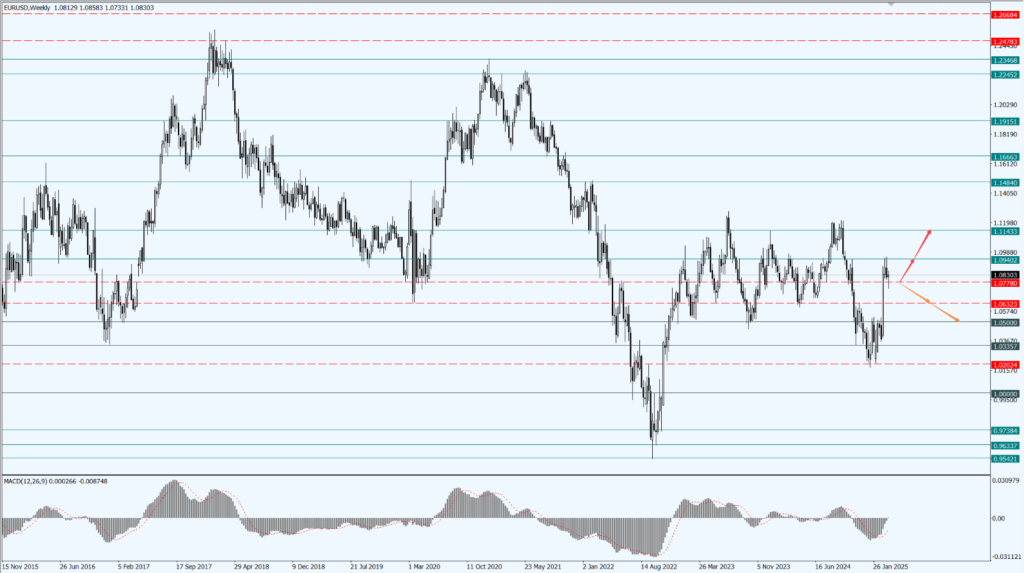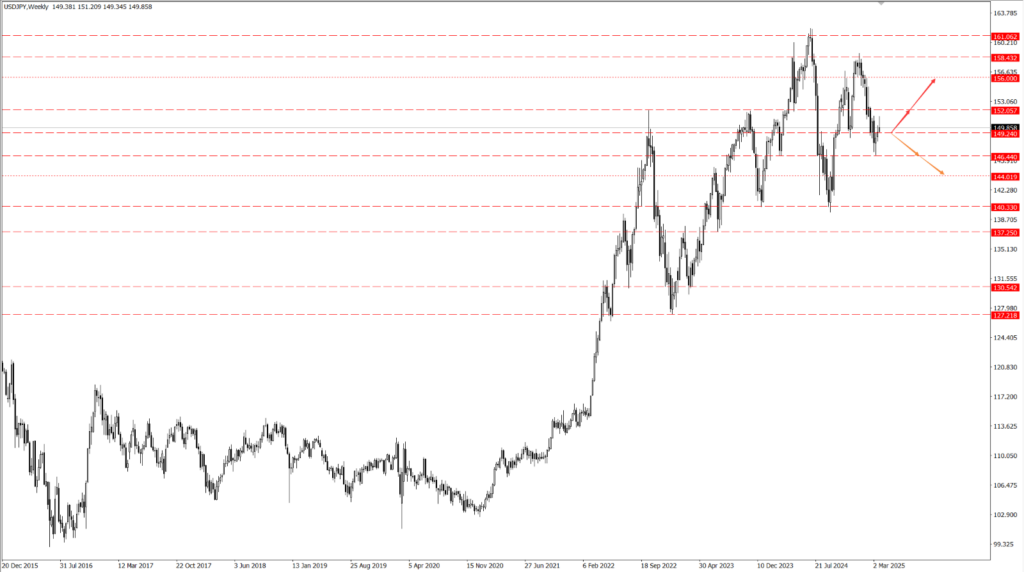US Dollar Index
Last week, Trump announced a 25% tariff on imported cars and threatened further measures if the EU and Canada retaliated. This policy shift not only sparked concerns about global trade but also led to a decline in US Treasury yields. Meanwhile, the US core Personal Consumption Expenditures (PCE) price index for February, released last Friday, rose 0.4% month-over-month, exceeding expectations. This heightened market fears of stagflation, further impacting the US dollar’s performance.

The US Dollar Index (DXY) oscillated sideways below the 104.36 level last week, continuing to show a lack of bullish momentum, with bearish forces holding a relatively dominant position. This week, attention remains on the key bull-bear threshold at 104.36.
- If the DXY remains below 104.36, bearish momentum will dominate, with a high probability of a sharp downward move occurring at any time. In this scenario, key support levels to watch are Yüksek, 101.85, and 100.53.
- If the DXY stabilizes and rises above 104.36, it will enter a phase of short-term rebound and consolidation. In this case, resistance levels to monitor are 105.56 and 107.40.
Euro vs. US Dollar
With the US set to impose a 25% tariff on imported cars starting April 2, the outlook for the euro has become increasingly uncertain. At the same time, earlier European data showed that inflation rates in France and Spain for March were well below expectations, while consumer expectations for price growth remained subdued. This could bolster the case for another interest rate cut by the European Central Bank (ECB), adding further upward pressure on the euro in an already challenging environment.

Last week, the EUR/USD pair briefly broke below the critical 1.0778 level but then stabilized and climbed back above it, indicating that buyers are actively preventing further selling pressure. As a result, EUR/USD has entered a stalemate between bulls and bears. This week, focus remains on the key bull-bear threshold at 1.0778.
- If EUR/USD finds effective support at 1.0778, resistance levels to watch are 1.0940 and 1.1143.
- If EUR/USD faces downward pressure and decisively falls below 1.0778 again, it will open up further downside potential, with support levels at 1.0632 and 1.0500 to monitor.
US Dollar vs. Japanese Yen
The minutes from the Bank of Japan’s (BOJ) March meeting revealed a consensus among members that interest rates would continue to rise if the economy and prices develop as expected. However, due to increased economic downside risks from US tariff policies, the BOJ decided to maintain policy stability for now. This week, Tokyo’s Consumer Price Index (CPI) for March rose 2.9% year-over-year, up from 2.8% previously, with the core figure (excluding food and energy) climbing to 2.2%, surpassing the BOJ’s 2% inflation target. This provides a basis for potential future rate hikes.

Last week, USD/JPY rose above the 149.24 level but then pulled back, gradually entering a consolidation phase between 146.44 and 152.05. This week, the key bull-bear threshold at 149.24 remains in focus.
- If USD/JPY continues to trade steadily above 149.24, resistance levels to watch are 152.05 and 156, with particular attention on the upper boundary of the range at 152.05. A decisive break above 152.05 would open further upside potential.
- If USD/JPY faces downward pressure and breaks below 149.24 decisively, support levels to monitor are 146.44 and 144.01.
Forward Looking Statement Disclaimer
This document contains forward-looking statements, which can generally be identified by the words “expects,” “believes,” “continues,” “may,” “estimates,” “anticipates,” “hopes,” “intends,” “plans,” “potential,” “predicts,” “should,” “will,” or similar expressions. Such statements are based on CG FinTech’s current expectations and assumptions, but actual results could differ materially from those anticipated due to a number of risks and uncertainties. CG FinTech does not guarantee the accuracy or completeness of these statements and undertakes no obligation to update or revise any forward-looking statements.
Disclaimer
The information provided herein is for informational purposes only and does not constitute an offer or solicitation to buy or sell any financial instruments. Trading Contracts for Difference (CFDs) and foreign exchange (forex) carries a high level of risk and may not be suitable for all investors. It is important to fully understand the risks involved and seek independent financial advice if necessary.
